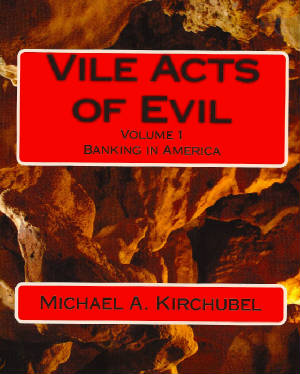In my September 30th, 2013, Daily Republic column, "The death of debt-free money," I told you how California Representative Jerry Voorhis got the Federal Reserve bankers to stop pocketing all the interest money they collected from the U.S. Treasury and how important that was to us poor taxpayers. I wrote: "Maybe some Monday, on these Daily Republic pages, we can discuss the remarkable story of how the bankers took their revenge on Representative Voorhis and how those actions fundamentally altered our nation's destiny adversely affecting us Fairfielders even today." Today, let's visit that "remarkable story."
When I started writing this column for the Daily Republic, I was given a relatively free rein, except for one thing--editor Glen Faison said no conspiracy theories. That has never been a problem, but Representative Voorhis' story sets into motion a vast, unbelievably complex machine, whose wheels of evil still spin. And yes, it's a conspiracy theory. However, since this is the 50th anniversary of President Kennedy's assassination and every other communication medium is cashing in on it, and since about 70% of Americans believe the assassination was a conspiracy, including the House of Representatives Select Committee on Assassinations, Glen gave me the go-ahead. As always, you should never believe anything without checking the facts for yourself. My motto: "Always Google everything."
That said, here goes: The New York banker that orchestrated the removal of Representative Voorhis from Congress was Prescott Bush, a director at the Brown Brothers, Harriman investment bank. Prescott's candidate was a young Republican named Richard Nixon. In 1947, after a successful, red-baiting campaign, Representative Nixon hired Jacob Leon Rubenstein, a Chicago thug, to help him with some special projects.
Cut to 1952: Prescott Bush, now a Republican Senator, encouraged his golfing buddy and presidential hopeful, Dwight Eisenhower, to pick the relatively young and inexperienced Richard Nixon to be his running mate. The next year, Allen Dulles, who was a partner with Senator Bush at Brown Brothers, Harriman, became the Central Intelligence Agency's first civilian director and Senator Bush's son, George H.W. Bush, started an oil-exploration company, Zapata Petroleum. In 1959, Fidel Castro's rebels took over Cuba and George H.W. Bush, now a C.I.A. agent, began drilling off the coast of Cuba. Director Dulles formed an anti-Castro assassination squad, called Operation 40, headed by Nixon, while George H.W. Bush recruited exiled Cubans to form a privately-funded invading army. Three months after the election of President Kennedy, the C.I.A.-trained troops landed at the Bay of Pigs. This invasion, known internally as "Operation Zapata," quickly collapsed because President Kennedy refused to send-in U.S. troops to help. Afterwards, President Kennedy said he wanted to "splinter the CIA into a thousand pieces and scatter it into the winds" and fired Allen Dulles. Dulles soon returned to the public eye, as a member of the Warren Commission, investigating Kennedy's murder.
Tell me, would you believe that both Richard Nixon and George Bush were in Dallas on November 22, 1963; that Nixon believed the Democratic National Committee in the Watergate Building had documents linking him to the Kennedy assassination; that Operation 40 members E. Howard Hunt, Frank Sturgis, and Bernard Barker were involved in the Watergate break-in; that George W. Bush's business partner, B.C.C.I. Director, and bin Laden frontman, James Reynolds Bath was part of a dozen-member Civil Air Patrol squad with many major C.I.A. drug-running and Kennedy-assassination players, including Lee Harvey Oswald; that the C.A.P. founder also owned the Texas School Book Depository; and that Nixon's Chicago pal, Jacob Rubinstein, moved to Dallas and changed his name to Jack Ruby?





